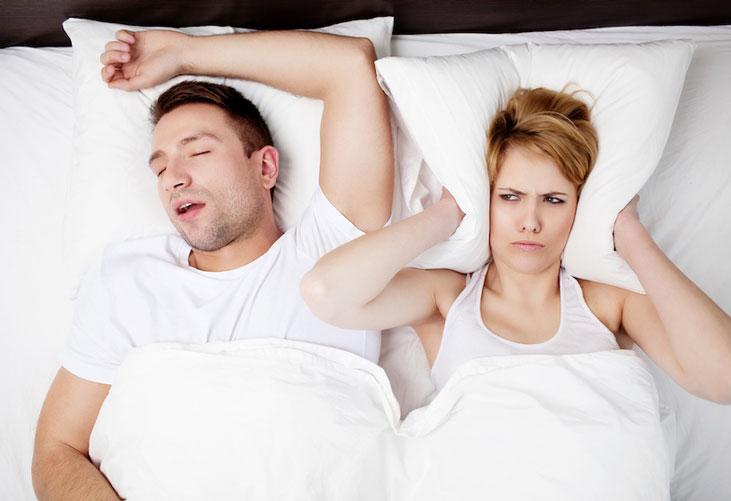Sleep is essential to military health, wellness, and performance. But many factors, including health conditions, contribute to inadequate sleep in the military. Sleep apnea is one the most common sleep disorders among Service Members, and it contributes to reduced sleep readiness.
A definite diagnosis of sleep apnea requires a healthcare provider evaluation. But you can benefit from learning more about sleep apnea types, symptoms, risk factors, and treatment options. If you notice signs of sleep apnea, you should seek immediate medical care, receive help, and enjoy better sleep.
What is sleep apnea?
Sleep apnea is when you stop breathing for 10 seconds or more during sleep. As a result, oxygen levels in your blood fall, and you wake up gasping for air. People with sleep apnea have fragmented sleep and don't spend enough time in the restorative stages of sleep.
Sleep apnea can be classified into 3 different types:
- Obstructive Sleep Apnea. This is the most common type of sleep apnea. It develops when a physical blockage prevents airflow through the upper airways during sleep.
- Central Sleep Apnea. In this type, the brain doesn't send proper signals to the muscles responsible for breathing. As a result, people have slow and shallow breathing during sleep.
- Complex Sleep Apnea Syndrome. This type includes cases of central sleep apnea that develop after a person receives treatment for obstructive sleep apnea.
What are the most common signs of sleep apnea?
If you suspect you or someone you know may have sleep apnea, watch out for these common signs and symptoms:
- Loud snoring, particularly if interrupted by periods of silence or choking sounds.
- Frequent awakenings during the night, often accompanied by a sensation of gasping for air.
- Excessive sweating and urination during the night.
- Daytime fatigue and sleepiness leading to reduced alertness and performance.
- Morning headaches.
- Dry mouth upon waking.
What contributes to sleep apnea?
Many factors can increase the risk of developing sleep apnea:
- Family history. People with a family history of sleep apnea have a higher risk of developing the condition.
- Head and neck anatomy. Some physical characteristics—thick neck, large tongue and tonsils, shorter lower jaw—might contribute to narrower airways, making breathing more difficult.
- Excess weight. Obesity is one of the most common causes of sleep apnea. Fat accumulation around the neck can block the upper airways.
- Smoking. People who smoke can develop inflammation in the upper airways, making it harder to breathe.
- Use of alcohol and some medications. Alcohol and substances found in muscle relaxants, sedatives, and tranquilizers relax muscles in your body, including those in your throat. This can make it more difficult to breathe during sleep and worsen sleep apnea.
- Disruption to circadian rhythm. Sleep apnea is strongly associated with frequent shift work, prolonged sleep deprivation, frequent time zone changes, and irregular sleep schedules. But additional research is needed to fully understand this connection.
- Post-traumatic stress disorder (PTSD). People with PTSD are more likely to have sleep apnea than the overall population. But more research is needed to understand the connection between both conditions.
What are the treatment options?
It's important to seek professional help if you suspect you have sleep apnea. Only a healthcare professional can accurately diagnose and effectively treat this condition. Diagnosis often involves a sleep study to monitor your breathing during sleep and determine the severity and type of sleep apnea you have.
Treatment for sleep apnea can vary according to the diagnosis. Some common treatments include:
- Lifestyle Changes. Implementing healthier habits can help improve sleep apnea symptoms. Healthcare providers might recommend weight loss, smoking cessation, reduced alcohol intake, and healthy sleep habits as part of holistic treatment. Developing these healthy habits can also help prevent sleep apnea.
- Continuous Positive Airway Pressure (CPAP) Machines. CPAP machines deliver a constant airflow to help keep the airway open during sleep.
- Oral Appliances. Some people benefit from wearing oral devices that keep the tongue or jaw in a specific position.
- Surgery. In severe cases or when other treatments aren't effective, surgery can remove physical blockages in the upper airways.
Sleep apnea is a common health issue among Service Members. A proper diagnosis and appropriate treatment can significantly improve your overall health, performance, and military readiness. If you don't have signs of sleep apnea, invest in healthy sleep habits to reduce the risk of developing this condition.





